¶ Introduction
The instrument landing system (ILS) is the ICAO standard, non-visual aid to final approach and landing. The ILS is defined as a precision runway approach aid which provides pilots with both vertical and horizontal guidance during an approach to land.
ILS Ground equipment consists of 2 directional transmitting systems and is sometimes paired with 2 or 3 marker beacons along the approach. The directional transmitters are known as the localizer and the glide slope.
The instrument landing system (ILS) provides the pilot with:
- Guidance information regarding the approach path derived from the localizer and the glide slope
- Range information at significant points along the approach path by marker beacons or continuous range information from distance measuring equipment (DME)
- Visual information in the last phase of flight from approach lights, touchdown and centre line lights, runway lights
The identification of an ILS is transmitted in International Morse Code and consists of a 2 or 3 letter identifier.
¶ Ground equipment: ILS
¶ Localizer
The localizer transmitter operates on one of 40 ILS channels within the very-high frequency (VHF) band from 108 MHz to 112 MHz. Each localizer's frequency first decimal shall be odd like the following examples: 108.1, 108.15, 108.3, and 108.35.
The localizer system consists of a network system from 13 to 41 VHF antennas.
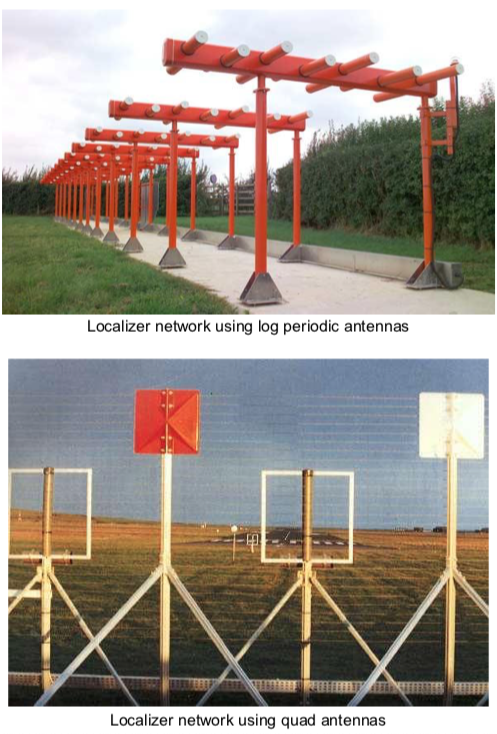
The localizer signal emitted from the transmitter site at the far end of the runway is confined within an angular width between 3° and 6°. The localizer provides course guidance throughout the descent path to the runway threshold from a distance of 18 NM from the antenna between a height of 1000ft above the highest terrain along the approach path and 4500ft above the elevation of the antenna site.

The course line along the extended centre line of a runway, in the opposite direction to the approach direction served by the ILS is called back course.
Distinct off-course indications are provided throughout the areas of the operational volume. These areas extend:
- 10° either side of the course within a radius of 18NM from the antenna
- 35° either side of the course within a radius of 10NM from the antenna
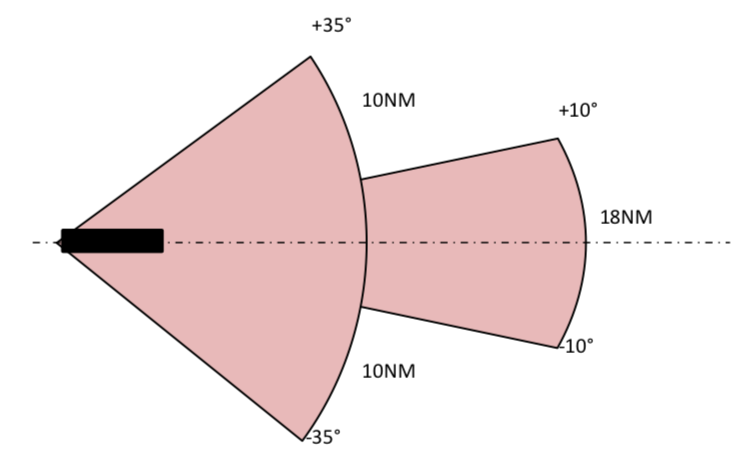
¶ Glide Path
The glide slope transmitter operates on one of 40 ILS channels within the ultra-high frequency (UHF) band from 329.15 MHz to 335 MHz. The glide path radiates its signal only in the direction of the localizer front course. The glide slope frequency is usually paired with the localizer frequency as the pilot enters only the localizer frequency in the aircraft instruments.
The glide scope transmitter is located between 230m/750ft and 380m/1250ft from the approach end of the runway and offset between 75m/250ft and 198m/650ft from the runway centre line.
It transmits a glide path with a beam width of 1.4°. The glide path projection angle is normally adjusted to 3° above the horizontal plane so that it passes through the middle marker at about 60m/200ft and the outer marker at about 426m/1400ft.
The glide slope is normally usable to a distance of 10NM (it can be extended when requested). The glide path provided by the glide slope transmitter is arranged so that it flares from 5 to 8m (18 to 27ft) above the runway. It should not be expected that the glide path will provide guidance to the touchdown point on the runway.
The glide path is the ideal descent slope and means that a portion of the glide slope intersects the localizer.
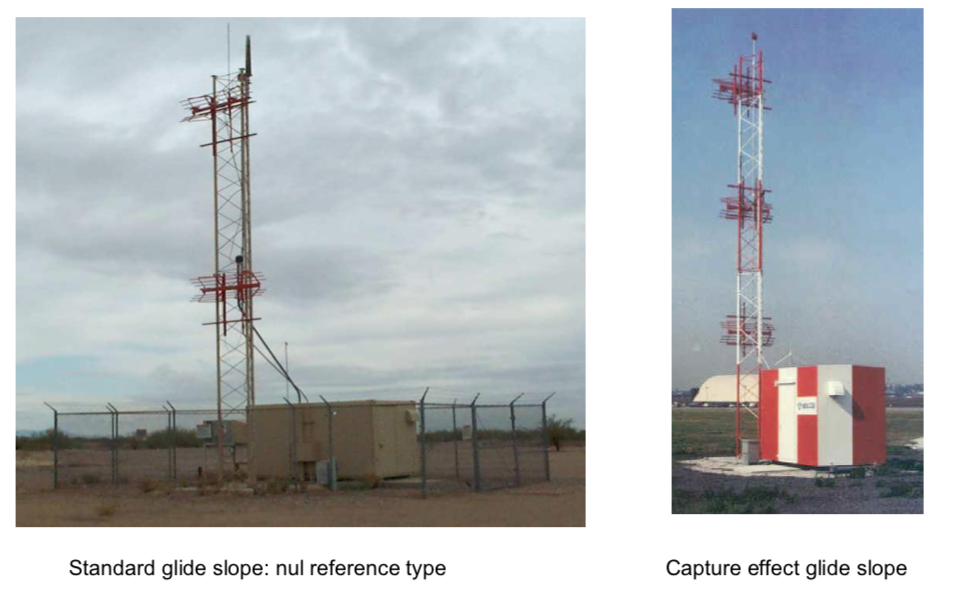
There are 5 glide slope systems:
- Null-reference
- Sideband-reference
- Capture-effect
- Endfire
- Waveguide
The null-reference, sideband-reference and capture-effect glide slope are image effect systems. They use ground reflexion in order to generate a radio electromagnetic field. The stability of this field is dependent on the weather condition (wet ground, snowy ground). The sideband-reference system is normally used when the runway is descending towards the end threshold. The capture-reference system is normally used when the runway is climbing towards the end threshold.
The endfire and waveguide glide slope are systems without image effect using the ground. They are usually employed when an image effect system cannot be implemented.
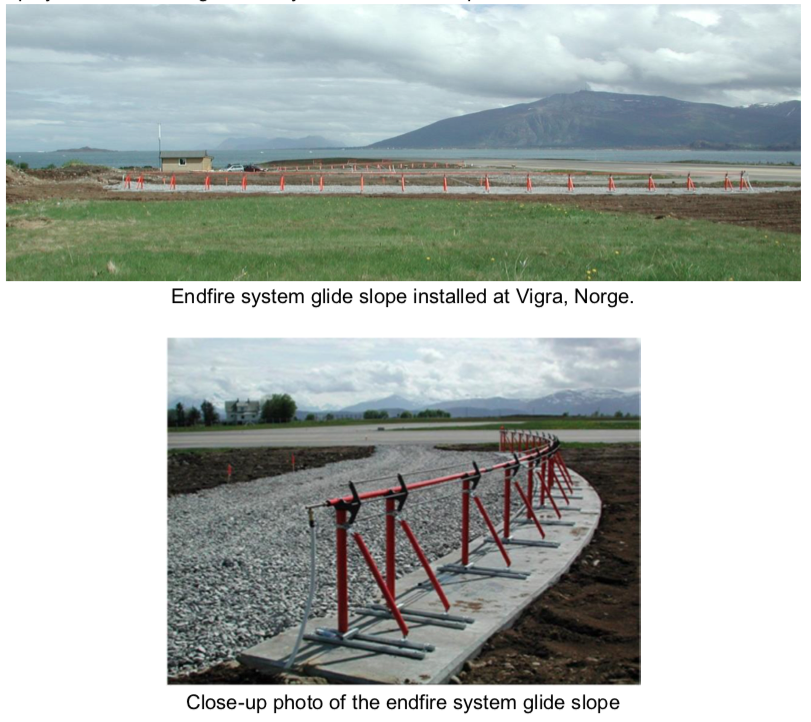
¶ ILS performance limitations
Glide slope and localizer signals are adversely affected by reflecting objects such as hangars, etc. At some locations, snow and tidal reflections also affect the glide path angle to a noticeable degree. In addition, the limited number of channels available for use by ILS may cause interference problems in areas where, due to the proximity of aerodromes, a large number of ILS are required.
¶ Principles of ILS signals
The principle of ILS signal generation is to create, via a complex electromagnetic field generated by the antennas, radiofrequency waves which can be simply represented by 2 fictive transmitters:
- One transmitter sends a 90Hz sine signal amplitude modulated on the VHF frequency of ILS.
- One transmitter sends a 150Hz sine signal amplitude modulated on the VHF frequency of ILS.
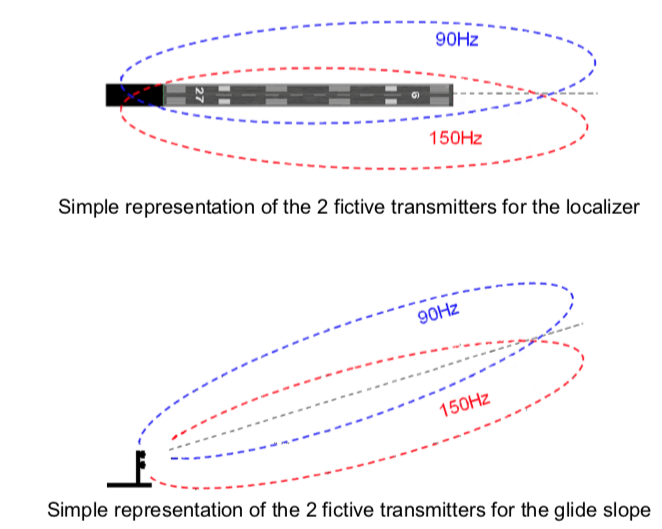
On the theoretical descent axis, the amplitude of the 90Hz and 150Hz sine signal are equal. Below or above for the glide path, or on the right or on the left for the localizer, the amplitudes are different. The difference of amplitude can determine the relative position of the aircraft from the theoretical descent axis.
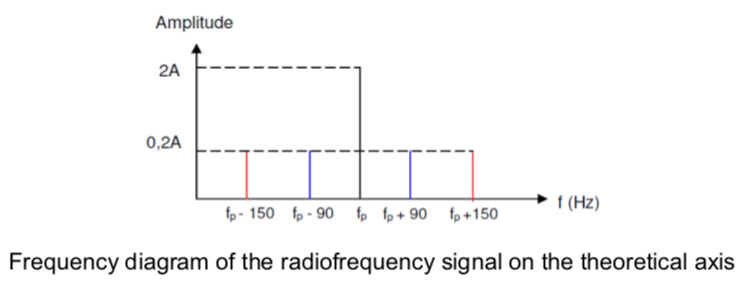
¶ Operational application and ILS categories
An approach may not normally be continued unless the runway visual range (RVR) is above the specified minimum. The pilot should follow the ILS guidance until the decision height (DH) is reached. DH shall be published on instrument approach charts (IAC) of the concerned airfield. At the DH, the approach may only be continued if the specified visual reference is available; otherwise, a go-around must be flown.
ILS approaches are defined by precision approach categories. These categories have been defined in order to allow suitably qualified pilots flying suitably equipped aircraft to suitably equipped runways using appropriately qualified ILS systems.
There are 3 categories of precision approach: CAT I, CAT II and CAT III (spelled CAT1, CAT2 and CAT3). CAT III has 3 sub-categories: CAT III A, CAT III B and CAT III C.
| Category of Operation | Decision Height (DH) | Runway Visual Range (RVR) |
|---|---|---|
| CAT I | DH > 200 ft (60m) | RVR > 550 m or VIS > 800 m RVR > 1800 ft or VIS > 2600 ft |
| CAT II | 100 ft > DH < 200 ft | RVR > 300 m RVR > 1000 ft |
| CAT III A | No DH or DH < 100 ft | RVR > 175m RVR > 550 ft |
| CAT III B | No DH or DH < 50ft | 50 m > RVR < 175 m 160 ft > RVR < 550 ft |
| CAT III C | No DH | No RVR limitation |
You may not use CAT III C as this category is never used on airports.
NO DH and NO RVR: This means a plane can come in without seeing anything at all during the whole landing flare and roll out, but since the pilots do not see a thing when their plane is stationary on the runway after landing, they cannot leave that runway under their own power and should be towed off!
The special conditions apply to Category II and III ILS operation:
- Aircraft equipment accuracy shall be compatible to the ILS category flown
- Pilot shall be trained and qualified for the ILS category flown
- Airfield installations shall be compatible with the ILS category selected.
Another point is the presence of different runway holding points displaced further back from the runway in order to ensure that aircraft on the ground do not interfere with ILS signal propagation.
Back course signals should not be used for conducting an approach unless a back course approach procedure has been published for the particular runway.
Consult the following documents if you want to learn more about operational use of an ILS approach :
- SPP/APC : IFR precision approach and minima
- SPP : Stabilized approach criteria
- SPP : ILS approach with BE90
- CP : Perform an ILS approach (A320)
- CP : Perform an ILS approach (B737)
¶ ILS on charts
The symbol of the ILS on charts can be one of these symbols. But many charts have no specific symbol for ILS (ILS is written in the procedure name).
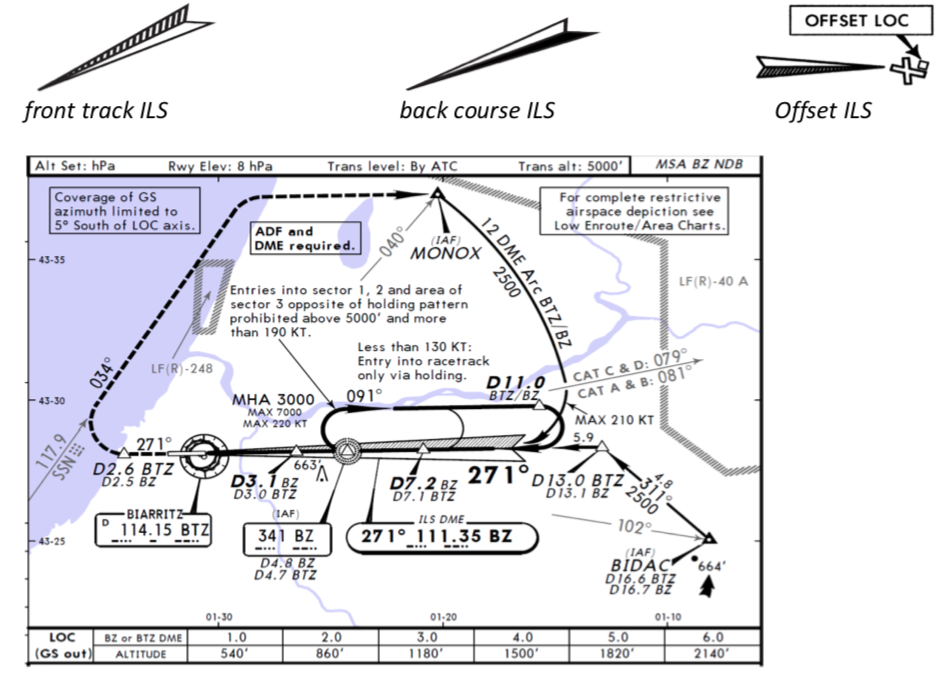
On the chart above, you can see a front track ILS sign.
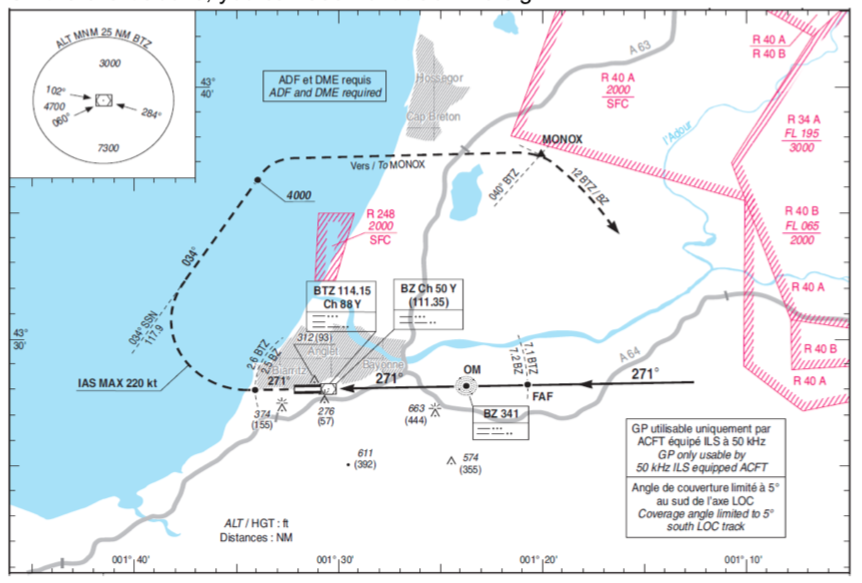
On the chart above, the ILS is represented with just a simple straight line.
- None
- None
- VID 150259 - Creation
- VID 450012 - Update
- VID 496402 - Wiki.js integration